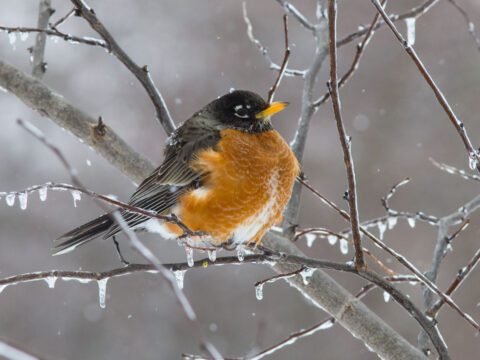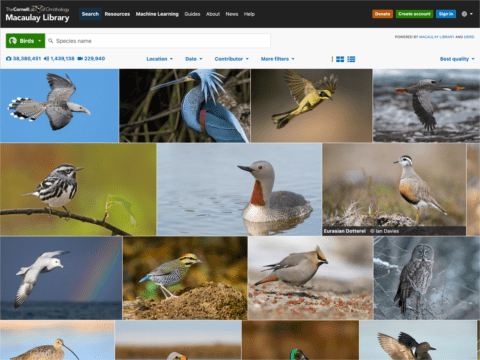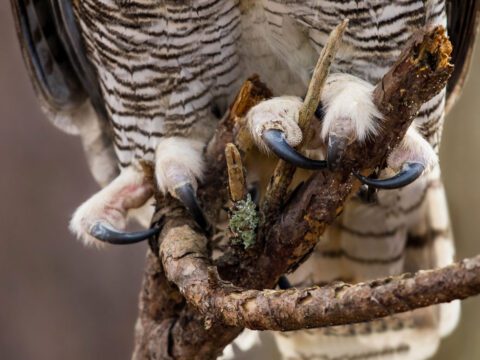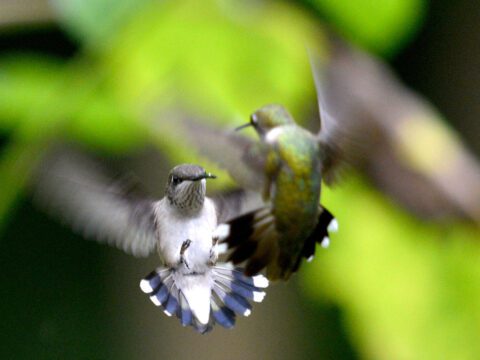The AOU Meeting: Blogged by the Scientists!
By Elise Ferree, Cornell Lab postdoctoral associate
August 12, 2009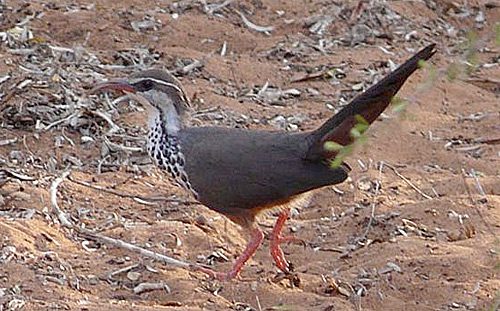
Wednesday, 5:30 pm The AOU conference has not yet officially started, but I’ve been to my first event already: a workshop on innovative teaching. I wasn’t the only one who thought this workshop was worth an early arrival: the room was packed.
David Winkler, one of Cornell’s own, went first. Winkler’s take-home message, after 20 years of teaching ornithology, centered on the importance of students learning ALL of the bird families of the world. Since I, like most American students, learned only the 108 or so families that occur in North America, I had to do a little research to find that the world contains 231 bird families, including oddities such as the Kagu (family Rhynochetidae) and the mesites (family Mesitornithidae).
But among the benefits of this harrowing exercise, Winkler said, are the chance to give students a sense of the diversity of birds, equip them with the broadest possible framework for understanding birds, and (if necessary) teach them a bit of humility. Now that I am on the instructor side of the classroom, I think teaching the birds of the world sounds like a great idea!
Two professors faced with limited resources still found ways to bring birds to the students and get students outside to watch birds. Margaret Voss from Penn State Erie has her students work with CamClickr, one of the Lab’s citizen science projects. Using webcams hidden in nest boxes across the country, CamClickr lets students study nesting birds without leaving the classroom.
Students look at dozens of photos—eggs, nestlings of all sizes, attentive parents, and more—and they record details like the stage of the nest and the birds’ behavior. The students learn about nesting biology, and Voss helps them develop and test their own ideas in research projects. All the while, students are contributing valuable data to the CamClickr project, helping scientists learn about nesting cycles of many species in great detail. Sounds like a win-win situation to me!
Margaret Rubega of the University of Connecticut also uses technology—something called Twitter—to teach. I should clarify that I was the only one in the room who does not own a cell phone, and I had no idea how to use Twitter.
But the assignment was simple. Over the semester, students wrote at least five Twitter posts that included the following information: 1. Where am I? 2. What observations can I make about the birds I see? 3. How does this observation relate to something I have learned in ornithology? According to Rubega, her students found the Twitter assignments prompted them to be more observant, helped them remember their lessons, and let them begin to appreciate birds.
Overall this workshop helped me think about how I teach ornithology. As other AOU attendees arrive and settle in to their university dorm rooms, I’m also reminded of the community that these annual meetings create. I’m inspired to work together in our efforts to teach and to learn about birds. It should be a great three days—stay tuned for reports from other participants!

All About Birds
is a free resource
Available for everyone,
funded by donors like you
American Kestrel by Blair Dudeck / Macaulay Library

